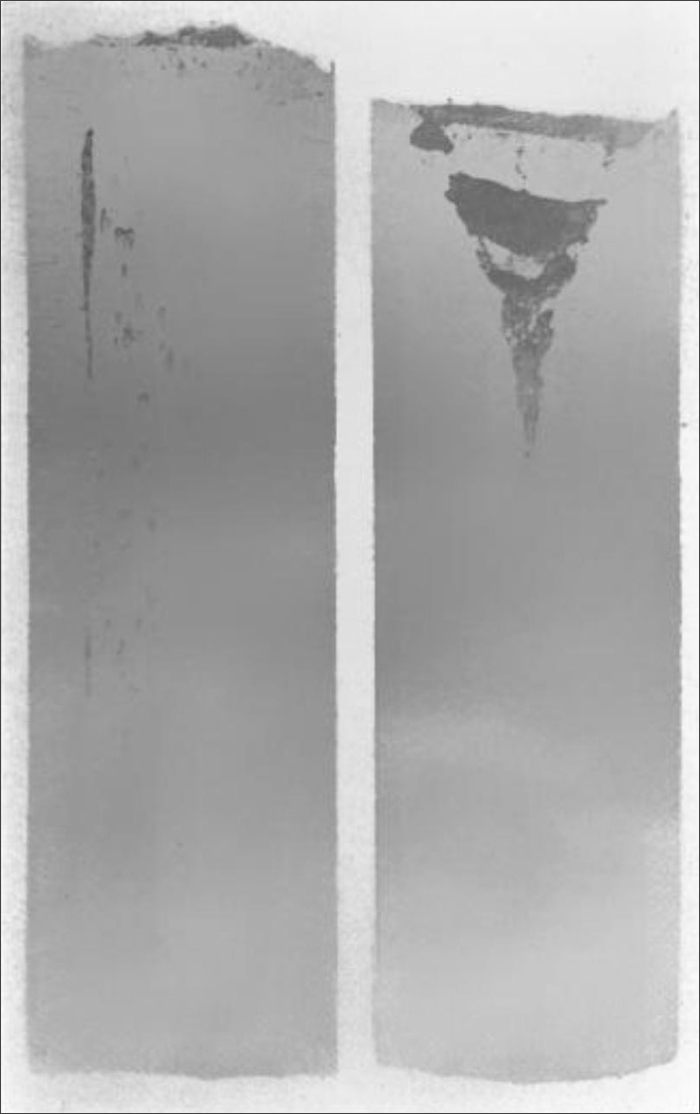breaks and inclusions

*
Fig. 18. A. Left—Ingot laid on side before final solidification.
B. Right—Ingot cooled in normal position.
(cropped, placed in reconstructed border)
illustrating Austin B. Wilson. "Defects in Steel Originating in the Ingot." Chemical & Metallurgical Engineering 23:24 (December 15, 1920) : 1161-1166
Pennsylvania State University copy, digitized December 11, 2013
subtitle of article provides abstract :
Microscopic appearance of breaks and inclusions of non-metals in steel, which defects originate during pouring or solidification — Various deoxidizers and their end products are listed and briefly discussed.
If cooled equally on all sides the "pipe" will occur in the center of the top of the ingot... That a "pipe" is a shrinkage cavity has been proved by laying an ingot on its side before final solidification has taken place. In this case the "pipe" is distributed on the upper side along the length of the ingot instead of being confined to the top part. Fig. 18 A is a photograph of an ingot which had been laid on its side before final solidification, as just described. Compare this with B, which shows the normal occurence of a "pipe"—i.e., in the top central portion of the ingot. The use of aluminum, silicon or any deoxidizer which causes the metal to set quietly increases "pipe" and usually necessitates the scrapping of a proportionately larger amount of metal.
p 1165
another instance of the scanning "Claude Glass" effect.
10 March 2014
tags: alumina; breaks and inclusions; defects; metallurgy; steel; August B. Wilson; Claude Glass